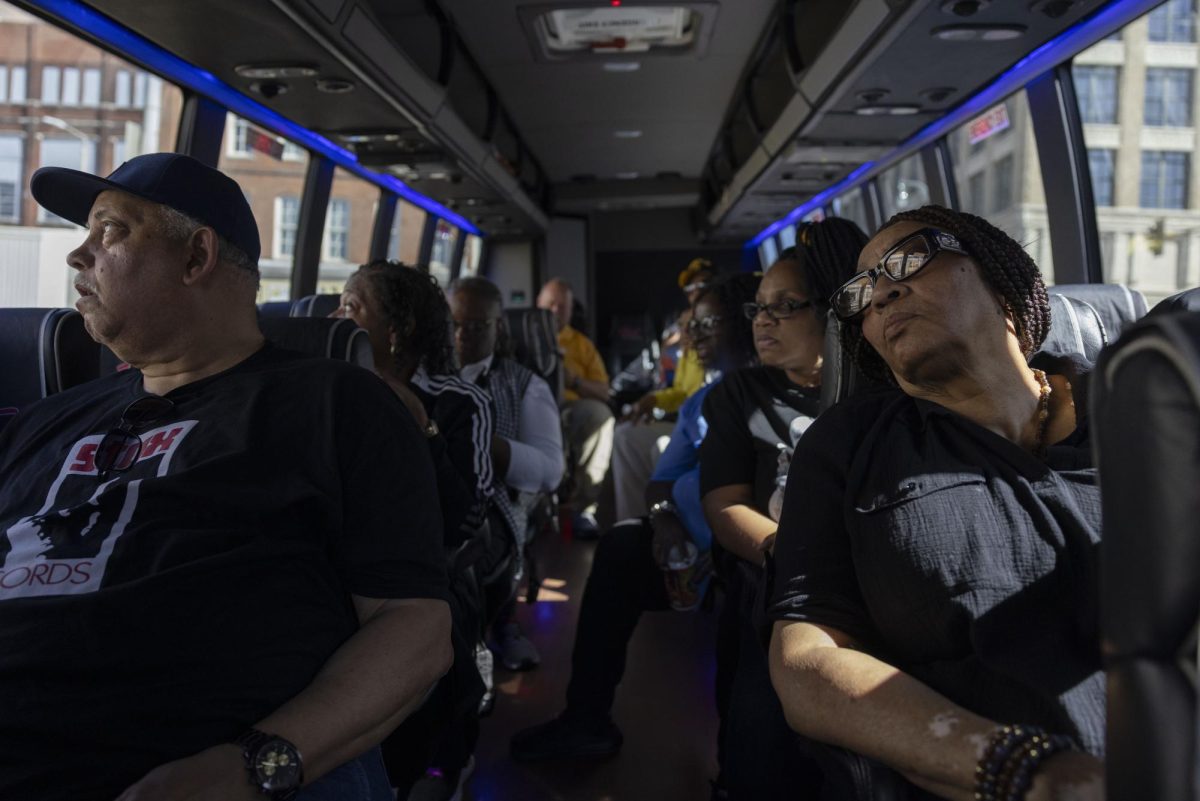Even without camels, settlers found a little Egypt in Illinois
February 26, 1997
As a student who is unfamiliar with the Southern Illinois region, Ronnie Siddondo said he often wonders how the area earned its name of Little Egypt.
I didn’t know whether the name of Cairo had anything to do with the naming of Southern Illinois as Egypt, said Siddondo, a first-year graduate student in curriculum and instruction from Kenya.
Siddondo is not the first to question the popular name of the region.
Advertisement
Jane Adams, an associate professor in anthropology and history, said she decided to research the origins of Little Egypt for herself.
Adams said the present town of Cairo was named in 1818, but she said Southern Illinois had an Egyptian tie years before Cairo was a town.
She said pyramid-like burial sites in the region constructed by Native Americans could have contributed to the tie.
The Mounds in Cahokia are the biggest pyramids in North America, she said. They were built by the Mississippian people who lived in the area, but they had ceased to exist as a civilization by the time the Europeans got here.
During the times of the Mississippian people, which was 700 to 1500 according to the Southern Illinois Tourism Council Web site, Adams said the Mississippi River would flood the region similar to the patterns of the Nile River in Egypt.
But many years after the Mississippian people inhabited that southern region, Adams said Goshen, near Edwardsville, became the first area given an Egyptian reference.
John W. Allen, a Southern Illinois historian, referred to the Goshen-Edwardsville connection in the book It Happened in Southern Illinois.
Advertisement*
Allen said in 1799, a pastor was sent to find a promising location for his church’s new settlement.
The pastor chose an Illinois site and sent a report back to his church about the location describing the land as a fertile land and free from plague.
The phrase quoted was from the biblical description of the land of Goshen, where the Israelites dwelt in ancient Egypt.
Moving into new regions, Adams said, people in early American history often found inventive ways to settle the areas.
People used to name towns using particular themes, she said. As a result, there are a lot of names of Egyptian cities in this area. People definitely picked up on the earlier references to Egypt.
Adams said Cairo was the first town to be named after an Egyptian city. She said Thebes was the second, with the rest of the Egyptian towns named after the Civil War.
In another book, Legends and Lore of Southern Illinois, Allen wrote that Egypt became a common reference to the Southern Illinois region five years before the planning of Cairo as a town.
In the same book, Allen relates a popular story, first told by A.D. Duff, a professor of law with the first faculty of Southern Illinois Normal University SIU’s original name.
According to Duff’s story, the winter of 1831 fostered the conditions leading to the use of the term Egypt. The winter was the longest, most severe winter Illinois residents had known. Winter frosts continued until May.
The following summer was cool, and frosts came again on Sept. 10. The late spring delayed the planting of crops, and the September frost killed much of the corn in Northern Illinois counties.
Farmers north of the area were forced to seek corn, for livestock and planting, in counties farther south.
Duff lived near a road in Bond County at the time. He saw many wagons going south to find corn and returning north with it.
Duff stopped some of the wagons, asking some of the northern farmers about their travels. Many farmers read the Bible and said they, like the sons of Jacob, were going down to Egypt for corn.
Adams said she found various versions of Duff’s account as well but said another theory behind Little Egypt had some historical documentation.
Adams said many people mistakenly believe the Egypt reference refers to the slavery that mainly existed south of the Mason-Dixon Line, which borders Southern Illinois on three sides.
But Adams said that theory is a misconception because Egypt is a symbol of slavery where the biblical Israelites were in bondage.
I sort of doubt that contributed to the reference of the region as Egypt, and I’ve never seen anything linking slavery to the name, she said.
But slavery existed in Southern Illinois as well. The Crenshaw House in Equality, in Gallatin County, is the only known place in Illinois where African Americans were kept as slaves before, during and after the Civil War.
While most theories have similar themes, Adams said her research taught her there is no official version of how Little Egypt was named.
Most have that sense that Southern Illinois was a place that could rescue you from a sort of famine, like biblical Egypt, she said.
However, Siddondo said his own theory was quite different from those of other researchers.
I think it’s because of the shape of the Southern Illinois region on the maps, he said. I’m not sure if it’s Egypt upside down…
Advertisement








